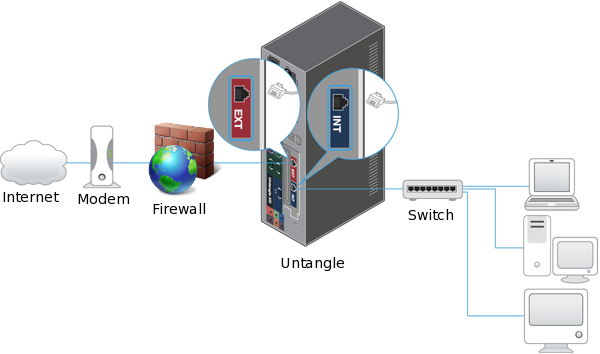

UnTangle Crack+ Free Download [32|64bit]
The following sections are divided into subsections covering thread analysis features.
Windows and Tasks
Each thread is presented as a single window and is connected to the current task or parent task. This makes it easy to explore how the threads are currently being used.
Working Set Analysis
The Working Sets view covers all the possible tasks and threads being performed at any given time. To understand how threads are being utilized, this view is essential.
Thread Dump
Thread Dump can be seen in the same window as the Working Sets view. The Thread Dump is a tree view that summarizes the history of all the threads in the system.
Crash
If the JVM reaches a fatal state, the CRASH view allows you to explore this, and identify the cause of the fatal crash.
View Thread Dump from Troubleshooting Application With the help of UnTangle, you will be able to do in-depth view thread dump.
Goals
An understanding of the different mechanisms that are involved in threading, in the JVM, and how they interact with each other.
Related Topics
(note: if you have been following our Java Performance JVMs series, you should see some overlap here)
Java Threading Basics
Historically, Java has used one thread per process for all the tasks running in the process. This makes it relatively easy to identify the problem. However, the underlying operating system needs to switch from using a single core to using a multi-core system in order to gain the benefits of multiple cores. When Java applications were first designed, multicore systems were nowhere to be found and Java developers didn’t need to design and implement multi-threading. Instead, Java leveraged native threading and, in its early years, was reasonably thread safe.
Given that the language itself was mostly thread safe, many of the issues that have arisen in Java dealing with threads over the years have been in the form of poor implementations of the native threading mechanisms by the JVM authors. To some extent, the threading mechanisms were designed in a way that only made sense on a single-core system.
Since Java 1.5, Java has a new threading model that has made use of threads very easy and inexpensive to implement. If a multithreaded application is not properly implemented, it can suffer from thread starvation and as a result become less efficient than it could be. Additionally, poorly-
UnTangle Full Version Free Download [Updated]
UnTangle is a Java tool that will help you understand the JVM Thread Dumps. It helps you analyze both JVMs and Thread Dumps. Its unique Tree View aggregates the threads into groups of similar threads. This Tree View makes it easier to understand the threads currently in the system and identify bottlenecks faster.
UnTangle is designed to be used with JDK Thread Dumps, thus, JDK 5+ is required.
.txt data is useful for manual analysis of the JVM Thread Dumps, and the.nfo file helps to unpack the Java Heap.
It has all the features needed to perform efficient JVM Thread Dump Analysis and to provide you with analysis report so that it can help you solve and identify your application performance problems.
UnTangle Features:
InUnTangle is the best Java tool for analyzing JVM Thread Dumps, which has the following features:
Supports JDK 1.1 and JDK 1.2
Creates JDK 5+ native Thread Dump
Highlights threads for analysis
Uses unique tree view
Allows sorting the threads by name
Allows filtering the threads
Allows all threads dump in the TreeView
Charts the threads with different colours
Can drill down into single threads
Can print threads in textual format
Can print threads in PDF or HTML format
Can generate different types of reports
Uses.txt data which is useful for manual analysis of the JVM Thread Dumps, and the.nfo file helps to unpack the Java Heap.
Supports a variety of sorting options
.txt data is useful for manual analysis of the JVM Thread Dumps, and the.nfo file helps to unpack the Java Heap.
Its unique Tree View aggregates the threads into groups of similar threads. This Tree View makes it easier to understand the threads currently in the system and identify bottlenecks faster.
UnTangle is designed to be used with JDK Thread Dumps, thus, JDK 5+ is required.
.nfo file is useful for manual analysis of the JVM Thread Dumps, and the.txt data helps to unpack the Java Heap.
Backing Up JVM Thread Dumps in the Backblaze Storage – Kologi
Backing Up JVM Thread Dumps in the Backblaze Storage – Kologi
Backing Up JVM Thread Dumps in the Backblaze
91bb86ccfa
UnTangle Patch With Serial Key
UnTangle is an instrument that’s been built in order to help you view and analyze JVM Thread Dumps.
UnTangle has a Unique Tree View, which aggregates the threads into groups of similar threads. This Tree View makes it easier to understand the threads currently in the system and identify bottlenecks faster.
UnTangle Features:
* Easy to use.
* Efficient.
* Unique to show the Thread Dumps information.
* Use the logdump to analyze the JVM Thread Dumps.
* Using the API for the VMs that are supported by UnTangle.
UnTangle Usage:
View Thread Dump by Location
Listing of threads dumpt by location:
Listing of threads dumpt by name:
JVM: Listing JVM Logs
Listing the JVM Logs.
This Listing of JVM logs is very useful when you are encountering an unexpected problem.
—————————————————————-
Casper Server Applications
—————————————————————-
View Server applications.
This page is shown when a server applications is running on the UNTANGLE Server.
View and manage server applications.
This page is shown when a server applications is running on the UNTANGLE Server.
View and manage server applications.
This page is shown when a server applications is running on the UNTANGLE Server.
Manage servers on a server application:
View and manage server applications.
This page is shown when a server applications is running on the UNTANGLE Server.
View and manage server applications.
This page is shown when a server applications is running on the UNTANGLE Server.
Manage servers on a server application:
What’s New In UnTangle?
UnTangle creates a graph to represent all the thread groups.
Sensible Network Monitor (SNM) is a network monitor which was created to analyze network traffic. It uses a Data Forwarding (DF) model, which means that the application traffic is sent to SNM which then analyzes the data received and generates statistics. The SNM application can generate the statistics via key-value pairs (ex. name, time, duration, number, etc.) which are then saved into MySQL database. Any changes in the application will be sent to MySQL database and statistics will be updated on the SNM server.
There are three basic actions which can be done with SNM:
If you are interested in the status of your log files, you can use the SNM log monitoring. SNM will send email or SMS alerts when log files are full, an error or the log size is greater than a threshold.
The first part of this application uses a feed or a set of feeds. The input of this application is a text file which contains a set of items separated by commas. Each item has a type, a start date and an end date. After parsing, the items are processed and stored into a database. This application can also generate a list of the last messages on the server, according to the input.
In this case, the application does not process or store any information, but it does generate a list of the last messages on the server.
In the second part of this application, the application can get the current status of the messages. The application reads the messages from the database and parses them according to the input, which is a text file. After that, the application presents a list of messages (per type, per date, per count,…). This list is saved into a buffer. You can use the buffer with the application to get a live view of the list of messages. This application can also reset the buffer and overwrite the old buffer with the current buffer.
If you want to save your messages with time-stamps in a database, you can use the SNM message log monitoring. SNM will email or SMS alerts when the log file reaches a threshold or an error.
With SNM log monitoring, you can save your message logs into a MySQL database. SNM can run in two modes, as a daemon mode and as an agent mode. Daemon mode provides an instant service. When an error occurs, the daemon mode will run immediately
System Requirements:
* Microsoft Windows (XP or later), Mac OS X 10.5 or later and Linux OS
* CPU: AMD Athlon II X2 256 1.83GHz or AMD Athlon XP 2.0 GHz or Intel Core 2 Duo CPU
* OS: Mac OS X 10.5 or later and Linux OS
* RAM: 1 GB or more (3 GB recommended)
* CD-R/DVD-R Drive: Recordable CD-R/DVD-R Drive for DVD-R/DVD+R or DVD-RW/DVD+RW

Discussion
Leave a reply